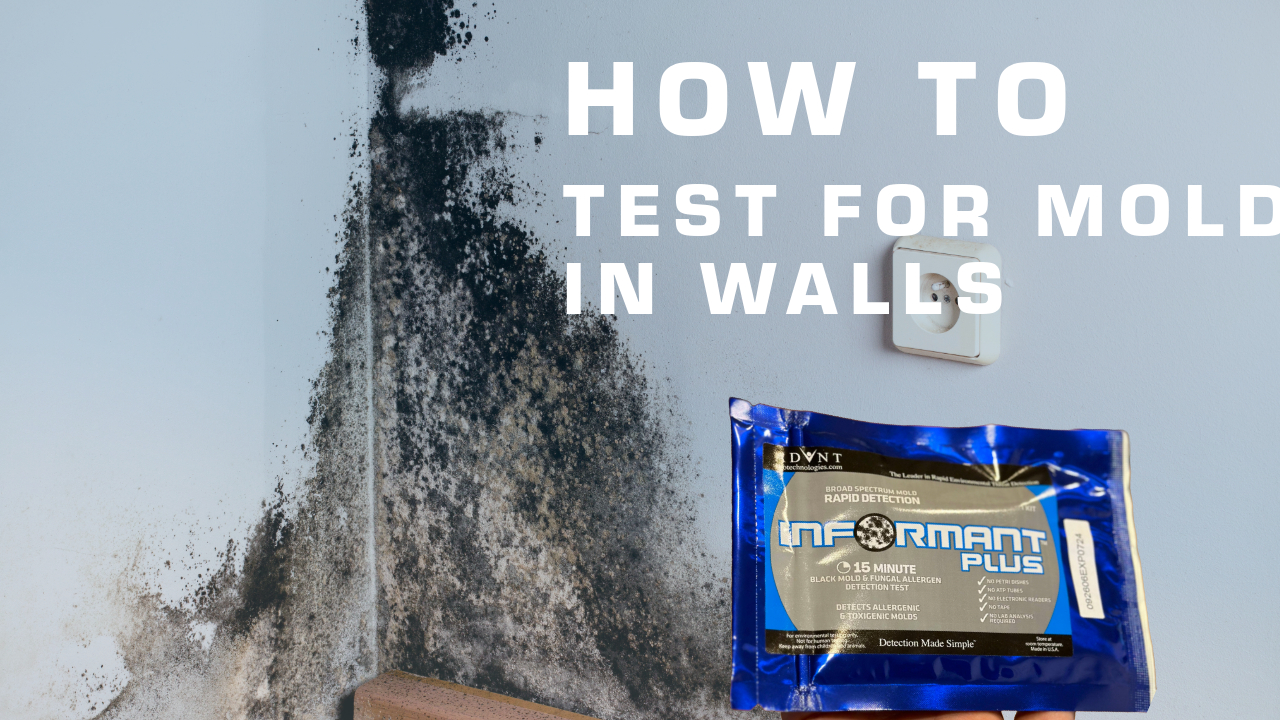
Testing for Toxic Black Mold Spores with a Hand-Held Assay
Mold can be a serious problem in buildings, and toxic mold spores can cause health problems for those who are exposed to them. Testing for toxic mold spores is important in order to identify and remediate mold problems. One way to test for toxic mold spores is with a hand-held assay. In this article, we will discuss what a hand-held assay is, how it works, and the benefits of using a hand-held assay for testing for toxic mold spores.
What is a Hand-Held Assay?
A hand-held assay is a type of test that can be used to detect the presence of toxic mold spores. It is a simple, fast, and easy-to-use tool that can be used by anyone, without the need for specialized training or equipment. A hand-held assay typically consists of a small testing device, similar in size to a pregnancy test, a sample collection device and diluent tube. The user collects a sample using the collection device and inserts some sample drops into the testing device sample well, and a result is obtained within a few minutes.
How Does a Hand-Held Assay Work?
A hand-held assay works by detecting the presence of specific proteins that are produced by toxic mold spores. The device contains antibodies that are specific to these proteins, and when the sample of mold spores is introduced to the device, the antibodies bind to the proteins. This binding triggers a chemical reaction that produces a visible result, such as a line on the device (T- Test Line) along with a control line (C) indicating proper test functioning and the presence of toxic mold spores.
Benefits of Using a Hand-Held Assay for Testing for Toxic Mold Spores
There are several benefits to using a hand-held assay for testing for toxic mold spores:
Fast Results
One of the main benefits of using a hand-held assay is that it produces results quickly. Unlike traditional mold testing methods, which can take days or even weeks to produce results, a hand-held assay can provide results in just a few minutes.
Easy to Use
Another benefit of using a hand-held assay is that it is easy to use. Anyone can use a hand-held assay, without the need for specialized training or equipment. This makes it a convenient option for those who want to test for toxic mold spores themselves, without having to hire a professional.
Cost-Effective
Hand-held assays are also cost-effective, compared to traditional mold testing methods. While the initial cost of the device may be higher than the cost of a traditional mold test, the overall cost of using a hand-held assay is often lower, due to the reduced need for professional testing services.
Portable
Hand-held assays are also portable, which makes them a convenient option for testing for toxic mold spores in different locations. They can be used in homes, offices, and other buildings, as well as in outdoor environments.
How to Use a Hand-Held Assay for Testing for Toxic Mold Spores
Using a hand-held assay for testing for toxic mold spores is a simple process. Here are the basic steps:
Step 1: Collect a Sample of Mold
The first step in using a hand-held assay is to collect a sample of mold from the area being tested. This can be done by wiping a surface with a sterile swab, or by collecting a sample of dust or air using a specialized collection device.
Step 2: Insert the Sample into the Hand-Held Assay
The next step is to insert the sample into the hand-held assay device. This is typically done according to the manufacturers recommended usage instructions.
Step 3: Wait for the Results
After inserting the sample into the device, the user should wait for the results. Most hand-held assays produce results within a few minutes, although the result time may vary depending on the specific device being used. Once the result is obtained, it should be interpreted according to the manufacturer’s instructions.
Step 4: Take Action Based on the Results
If the hand-held assay indicates the presence of toxic mold spores, it is important to take action to remediate the problem. This may involve hiring a professional to perform mold remediation, or taking steps to reduce moisture levels in the affected area to prevent further mold growth.
Limitations of Hand-Held Assays for Testing for Toxic Mold Spores
While hand-held assays can be a convenient and effective way to test for toxic mold spores, there are some limitations to consider. These include:
Limited Sensitivity
Hand-held assays may not be as sensitive as traditional mold testing methods, which can detect lower levels of mold spores. This means that a negative result from a hand-held assay does not necessarily mean that there are no toxic mold spores present.
Limited Coverage
Hand-held assays typically only test for specific types of toxic mold spores. This means that they may not provide a complete picture of the mold spores present in the tested area.
User Error
Hand-held assays may be subject to user error, which can result in inaccurate results. It is important to carefully follow the manufacturer’s instructions when using a hand-held assay for testing for toxic mold spores.
Conclusion
Testing for toxic mold spores is an important step in identifying and remedying mold problems in buildings. Hand-held assays can be a convenient and effective way to test for toxic mold spores, providing fast and easy-to-interpret results. However, it is important to consider the limitations of hand-held assays, and to take appropriate action based on the results obtained.
FAQs
- How accurate are hand-held assays for testing for toxic mold spores? Hand-held assays can be accurate, but they may not be as sensitive as traditional mold testing methods. It is important to carefully follow the manufacturer’s instructions when using a hand-held assay for testing for toxic mold spores.
- Can anyone use a hand-held assay for testing for toxic mold spores? Yes, hand-held assays are designed to be easy to use and do not require specialized training or equipment.
- What should I do if a hand-held assay indicates the presence of toxic mold spores? If a hand-held assay indicates the presence of toxic mold spores, it is important to take action to remediate the problem. This may involve hiring a professional to perform mold remediation, or taking steps to reduce moisture levels in the affected area to prevent further mold growth.
- Are hand-held assays more cost-effective than traditional mold testing methods? Hand-held assays can be more cost-effective than traditional mold testing methods in some cases, due to the reduced need for professional testing services.
- How portable are hand-held assays for testing for toxic mold spores? Hand-held assays are portable and can be used in a variety of settings, including homes, offices, and outdoor environments.
Share this article
Written by : Tim Scherkenback
I have been selling environmental detection tests for many years with Advnt Biotechnologies.
Follow us
Latest articles
July 2, 2025



